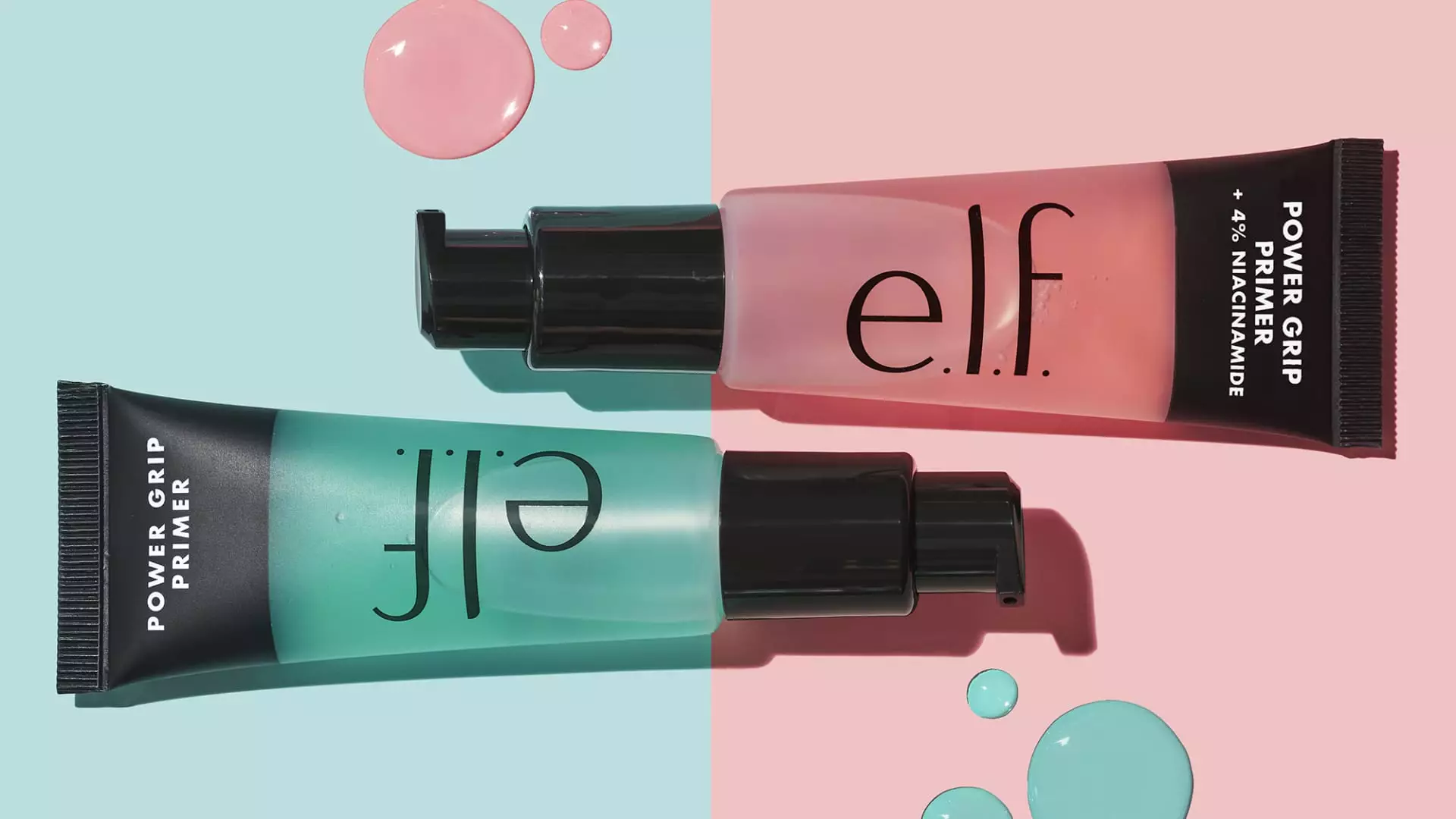E.l.f. Beauty has recently demonstrated stellar performance, as evidenced by a remarkable 40% growth in sales over the last quarter. The company reported a significant jump in earnings per share (EPS) to 77 cents, far surpassing the Wall Street expectation of 43 cents. Its revenue reached $301 million, exceeding analysts’ predicted figure of $286 million. The net income for this period was reported at $19 million, although this reflects a decline compared to $33 million from the previous year. This complex portrait of financial performance showcases not just growth but also the challenges inherent in continuing such an ascent.
The company’s upgraded full-year guidance is notably optimistic, projecting sales between $1.32 billion and $1.34 billion, which exceeds analyst forecasts set at $1.30 billion. This kind of guidance typically reflects a combination of strategic initiatives and market conditions that have favored E.l.f., particularly its strong position in the value cosmetics sector.
The driving force behind E.l.f.’s successes can largely be attributed to its inventive marketing strategies and its ability to connect with a younger demographic. CEO Tarang Amin highlighted that E.l.f. has the unique advantage of appealing across generational lines, particularly among Gen Z, Gen Alpha, and Millennials. This broad appeal has indeed translated into notable sales growth, with young consumers drawn to E.l.f.’s products that offer prestige quality at accessible price points.
The company’s viral marketing campaigns have become a noteworthy aspect of its branding strategy. Leveraging social media influencers and engaging directly with consumers has fostered a community around the brand. Such strategies not only enhance brand loyalty but also resonate with consumers who value both price and quality. This approach is especially relevant in a cosmetics landscape that is increasingly saturated with options, making it imperative for brands to carve out unique identities.
Operational Efficiency and Financial Management
Despite rising expenses in selling, general, and administrative (SG&A) costs, which surged by $74 million, E.l.f. managed to maintain an enviable gross margin of 71%. While these costs represented a higher percentage of net sales at 62%, the increase in operational expenses can be viewed as an investment in growth through expanded shelf space and marketing outreach. The slight enhancement in gross margin, attributed in part to favorable foreign exchange rates and strategic pricing, showcases the company’s ability to maintain profitability while investing in growth.
Interestingly, Amin points out that the innovation mix within their product line has been pivotal. Investing in product development frequently yields higher margins while simultaneously allowing E.l.f. to maintain its reputation for offering delightful value to consumers. This dual strategy of prudent financial management, paired with product innovation, underpins E.l.f.’s current success.
E.l.f. has also made strides in expanding its international presence, which now constitutes roughly 21% of overall revenue. This global diversification not only offers additional revenue streams but also acts as a buffer against potential domestic market fluctuations, especially with the uncertainty surrounding tariffs and international trade policies.
The alignment with retailers like Target and Walgreens for expanded shelf space further indicates E.l.f.’s strong positioning and the anticipated growth trajectories within the major retail channels. The upcoming changes in the supply chain and consumer purchasing trends could substantiate E.l.f.’s ambitions to capture a larger share of the cosmetics market.
E.l.f. Beauty’s sustained growth in sales and strategic positioning in the market reflect a dynamic company that is not only adept at navigating challenges but also capitalizing on emerging opportunities. The interplay of effective marketing, operational efficiency, and international expansion paints a promising picture for the retailer. As E.l.f. continues to innovate and adapt, its trajectory appears to be one of potential continued success in a rapidly evolving industry. The next fiscal year will reveal whether this momentum can be sustained and how macroeconomic factors will influence future performance.

